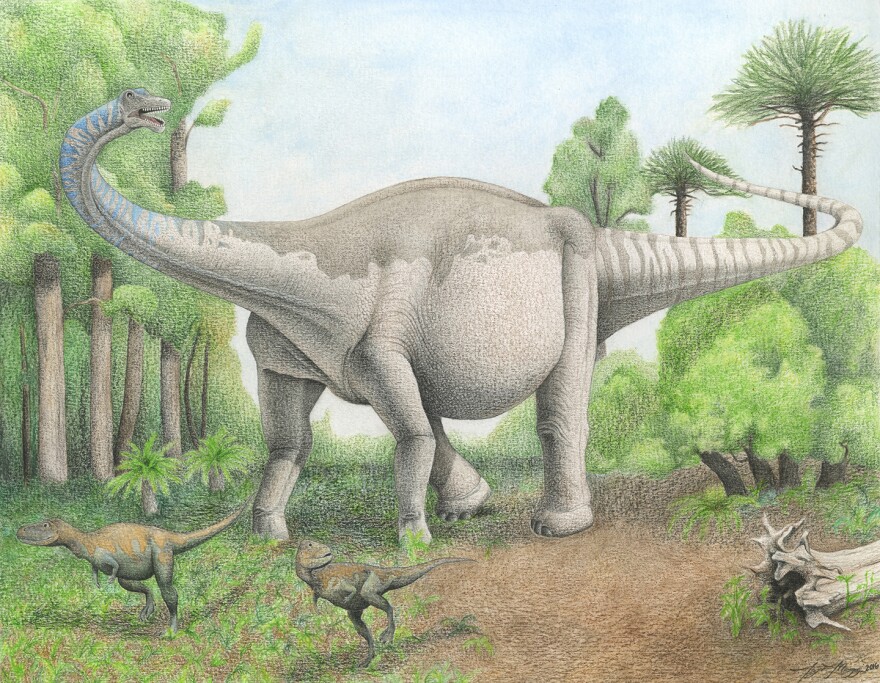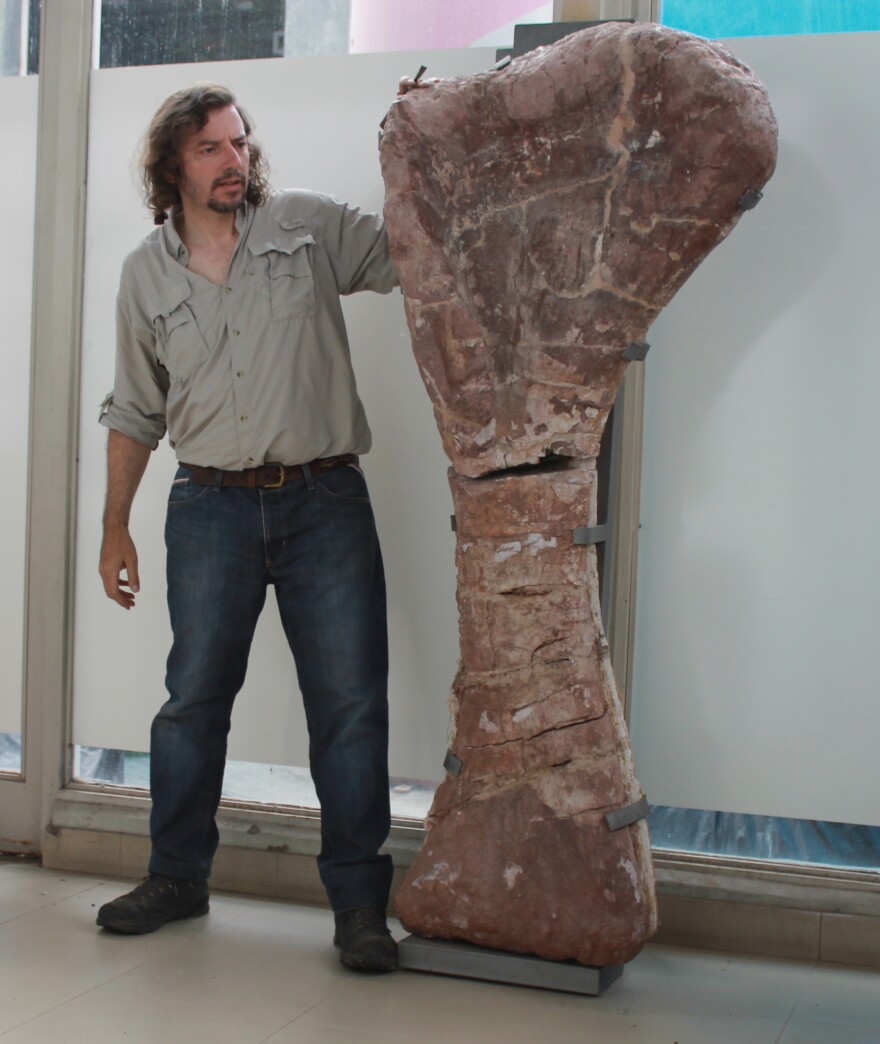A new species of a very old dinosaur was recently discovered with help from a Carnegie Museum of Natural History paleontologist.
Believed to be 85 million years old, Notocolossus was likely 82 to 92 feet in length and weighed more than 132,000 pounds -- as much as nine to 13 elephants and about three-times the weight of "Dippy," the Diplodocus dinosaur outside of the museum.
Bernardo González Riga of the Universidad Nacional de Cuyo led the study and published a report on his findings this week.
“It’s weird to think of Diplodocus as maybe, a greyhound, or something like that. But if Diplodocus is the greyhound, then Notocolossus would be something like a Saint Bernard,” said Matthew Lamanna, the local paleontologist who assisted Riga on the report.
This new species of sauropods, which are large, four-legged herbivores with long necks and bodies, was found in the Mendoza Province of Southern Argentina. Lamanna said the terrain in places like Argentina is perfect for fossil discovery.
“The rocks tend to be well-exposed. In other words, there’s not a lot of plants all over the rock, you know, hiding everything,” he said. “And if you can find the rocks that the dinosaurs are buried in, you’ve got a good shot at finding the dinosaurs themselves."
According to the report, researchers found bones from the back, tail, forelimb, pelvis, as well as a complete ankle and foot.

The bones were the first foot bones of this group of sauropods, the titanosaurs, ever found. Researchers said they could be the key to understanding how huge dinosaurs like Notocolossus supported their weight.
“The foot of Notocolossus shows specializations, even compared to other sauropod feet, that seem to be adaptations for carrying around a truly extraordinary amount of weight,” Lamanna said.
According to the report, Notocolossus had a small number of bones in their foot, even with their enormous mass. This evolutionary adaptation is still a mystery to scientists.
The animal’s full name, Notocolossus gonzalezparajasi, was dedicated to attorney Jorge González Parejas of the Mendoza region who made contributions to protect the land for paleontological research. Notocolossus translates to “southern giant."
Lamanna said working at the Carnegie Museum serves as a constant reminder of the lasting benefits to scientific research and discovery.
“As I walk downstairs to our dinosaur hall and I look at the faces of the kids that come in there, absolutely, there’s still a lot of amazement and excitement when people see those things for the first time,” he said.
Notocolossus bones are currently on display for scientists at the Universidad Nacional de Cuyo.




